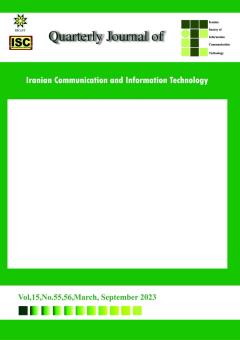-
-
List of Articles
-
Open Access Article
1 - Improving Opinion Aspect Extraction Using Domain Knowledge and Term Graph
Mohammadreza Shams Ahmad Baraani Mahdi Hashemi -
Open Access Article
2 - Emerging technologies in future generations of high performance computing: introduction, taxonomy and future research directions
mahmood nematollahzadeh ehsan arianyan Masoud Hayeri Khyavi niloofar gholipoor abdollah sepahvand -
Open Access Article
3 - Valuation of digital services in Iran: Empirical proof for Google and Instagram
FARHAD ASGHARI ESTIAR AMIR MOHAMMADZADEH Ebrahim Abbasi -
Open Access Article
4 - A novel metaheuristic algorithm and its discrete form for influence maximizing in complex networks
Vahideh Sahargahi Vahid Majidnezhad Saeed Taghavi Afshord Bagher Jafari -
Open Access Article
5 - Fuzzy Multicore Clustering of Big Data in the Hadoop Map Reduce Framework
Seyed Omid Azarkasb Seyed Hossein Khasteh Mostafa Amiri -
Open Access Article
6 - Information Technology, Strategy Implementation, Information Systems, Strategic Planning, Input-Process-Outcome Framework
Mona Jami Pour Shahnaz Akbari Emami Safora Firozeh -
Open Access Article
7 - Automatic Lung Diseases Identification using Discrete Cosine Transform-based Features in Radiography Images
Shamim Yousefi Samad Najjar-Ghabel -
Open Access Article
8 - The main components of evaluating the credibility of users according to organizational goals in the life cycle of big data
Sogand Dehghan shahriyar mohammadi rojiar pirmohamadiani -
Open Access Article
9 - Predicting the workload of virtual machines in order to reduce energy consumption in cloud data centers using the combination of deep learning models
Zeinab Khodaverdian Hossein Sadr Mojdeh Nazari Soleimandarabi Seyed Ahmad Edalatpanah -
Open Access Article
10 - The effect of Internet of Things (IOT) implementation on the Rail Freight Industry; A futures study approach
Noureddin Taraz Monfared علی شایان ali rajabzadeh ghotri -
Open Access Article
11 - Design of Distributed Consensus Controller for Leader-Follower Singular Multi-Agent Systems in the Presence of Sensor Fault
Saeid Poormirzaee Hamidreza Ahmadzadeh masoud Shafiee -
Open Access Article
12 - Indigenous model of commercialization of complex technologies based on partnership in the ICT sector
Mahdi Fardinia Fatemeh saghafi Jalal Haghighat Monfared -
Open Access Article
13 - Improving energy consumption in the Internet of Things using the Krill Herd optimization algorithm and mobile sink
Shayesteh Tabatabaei -
Open Access Article
14 - Liquidity Risk Prediction Using News Sentiment Analysis
hamed mirashk albadvi albadvi mehrdad kargari Mohammad Ali Rastegar Mohammad Talebi -
Open Access Article
15 - Identify and analyze decision points and key players in procurement process in the EPC companies
Seyedeh Motahareh Hosseini Mohammad aghdasim -
Open Access Article
16 - Fake Websites Detection Improvement Using Multi-Layer Artificial Neural Network Classifier with Ant Lion Optimizer Algorithm
Farhang Padidaran Moghaddam Mahshid Sadeghi B. -
Open Access Article
17 - Extracting Innovation Strategies and Requirements for Telecommunication Companies: Case Study of Telecommunications Infrastructure Company
Alireza Esmaeeli Alireza Asgharian Takavash Bahreini Nasrin Dastranj Mahshid Ghaffarzadegan Kolsoum Abbasi-Shahkooh Mandana Farzaneh Homeyra Moghadami -
Open Access Article
18 - Using limited memory to store the most recent action in XCS learning classifier systems in maze problems
Ali Yousefi kambiz badie mohamad mehdi ebadzade Arash Sharifi
-
The rights to this website are owned by the Raimag Press Management System.
Copyright © 2017-2025







